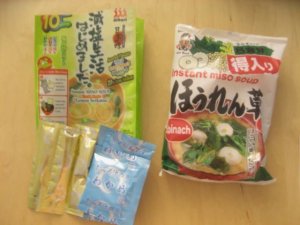bebe
Ideal_Rock
- Joined
- Nov 20, 2007
- Messages
- 2,845
I''ve read and heard how good this is for you. And after reading a few recipes, it seems you can build the soup anyway
that suits you. But I have zippo knowledge about Miso. Is there a certain kind, what''s better than the other....???????
Any ideas or help would be really welcome. DH and I determined to eat healthier and this sounds like a good start.
that suits you. But I have zippo knowledge about Miso. Is there a certain kind, what''s better than the other....???????
Any ideas or help would be really welcome. DH and I determined to eat healthier and this sounds like a good start.







300x240.png)